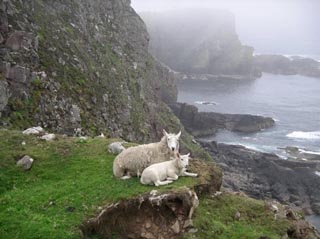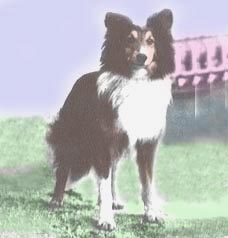
About Shelties
The small, cold, and rocky islands off of Scotland known as Shetland are a foreboding place to all but the most formidable of souls. Two hundred years ago, before the creature comforts of push button power, heat, and lighting came on the scene, the severe climate indigenous to these little isolated rock masses unquestionably made for a difficult life course, indeed. Yet the people of Shetland persevered, developing small and sturdy breeds of livestock capable of subsisting in this virtually unique environment. These livestock provided them a means of food, clothing, trade, income, and ultimately, survival.
Maintaining their small herds, protecting their properties, and companioning their families called for the abilities of a smart, gentle, compact, agile and sturdy little dog. This breed would need to be up to the rigors of life on the islands as well as possess the sensitivity and deeply bonded nature their close knit family existence would demand. These requirements fostered the development of the breed first known as the Shetland Collie, and later renamed the Shetland Sheepdog.
Developed initially from crosses between the small Spitz breeds brought from northern Europe and the Rough Coated Collies of Scotland and Ireland, the little herding breed became such a hit with early tourists to the islands that it nearly became extinct almost as soon as it was created. So many of the early dogs were taken from Shetland by pet loving outlanders, in fact, that a concerted effort had to be made to preserve the few herding dogs which remained. Thankfully, dedicated herdsmen and breed fanciers worked diligently to import working Rough Collies to the islands with the determination to breed them to the few small herding dogs they had left and thus re-establish their breed. Selectively breeding for such attributes as a strong herding instinct, high intelligence, heavy weather resistant coat, small size, and a gentle yet protective nature, this little group of individuals was able to bring the Shetland Collie back as a breed.
It was early in the twentieth century that the Sheltie made it's way into the United States. Once again, the little sheepdog became instantly popular, and was accepted into the American Kennel Club (AKC) registry in 1914. Because of limitations imposed by the first World War, however, importation of enough dogs to fully establish the breed in this country became impossible, and once again the breed nearly disappeared almost as soon as it arrived. Eventually, though, enough of these beautiful and enchanting little dogs came to our shores to endear a dedicated fancy. These admirers were able to officially establish the American Shetland Sheepdog Association (ASSA) in the year 1929.
Note should be made that there has long been an inclination among the public to call the Shetland Sheepdog a "miniature Collie". While this moniker is technically incorrect, being that there were, besides the Collie, other dogs used in the early development of the Sheltie, the Collie was certainly the breed most prominently used in establishing today's Shetland Sheepdog. The similarities in appearance between the two breeds are absolutely both understandable and intentional. As the history of the Sheltie is well documented, it is only lack of research or personal prejudice that explains any determination that the two breeds are anything but closely related, and sharing a very recent and purposeful ancestry.
Throughout the ensuing years since the establishing of the ASSA in 1929, dedicated breeders have worked diligently to preserve and promote the Shetland Sheepdog as a small, agile, highly intelligent and magnificently beautiful little working dog. The Sheltie we have today maintains a strong herding instinct and a deeply bonded love for his home and family. He is ideally loyal, protective, friendly, mentally and structurally sound, compact, sweet natured, and strikingly beautiful. He is most happy and comfortable with a home to protect, a family to love, and job to do. We salute those early breeders in Shetland, and ultimately those throughout Britain, the U.S., and Canada who have so determinedly protected and promoted this breed that we today may participate in enjoying, sharing, and passing the wonderful Shetland Sheepdog along to the next generation.
The Shetland Sheepdog
by Terry Thistlethwaite

Shetland Sheep relaxing
on the rocky coast of one of the
islands for which they were named.

Ch Wee Laird of Downfield,
born in 1928, is considered
to be the most influential
sire behind the modern day
U.S. Shetland Sheepdog,

Ch Halstor's Peter Pumpkin,
born in 1965, is one of the most
important sires in today's Sheltie
pedigrees. An outstanding producer
of quality dogs, he held the all breed
stud dog record tor champion get,
and can be found behind most of
today's top winning Shelties.